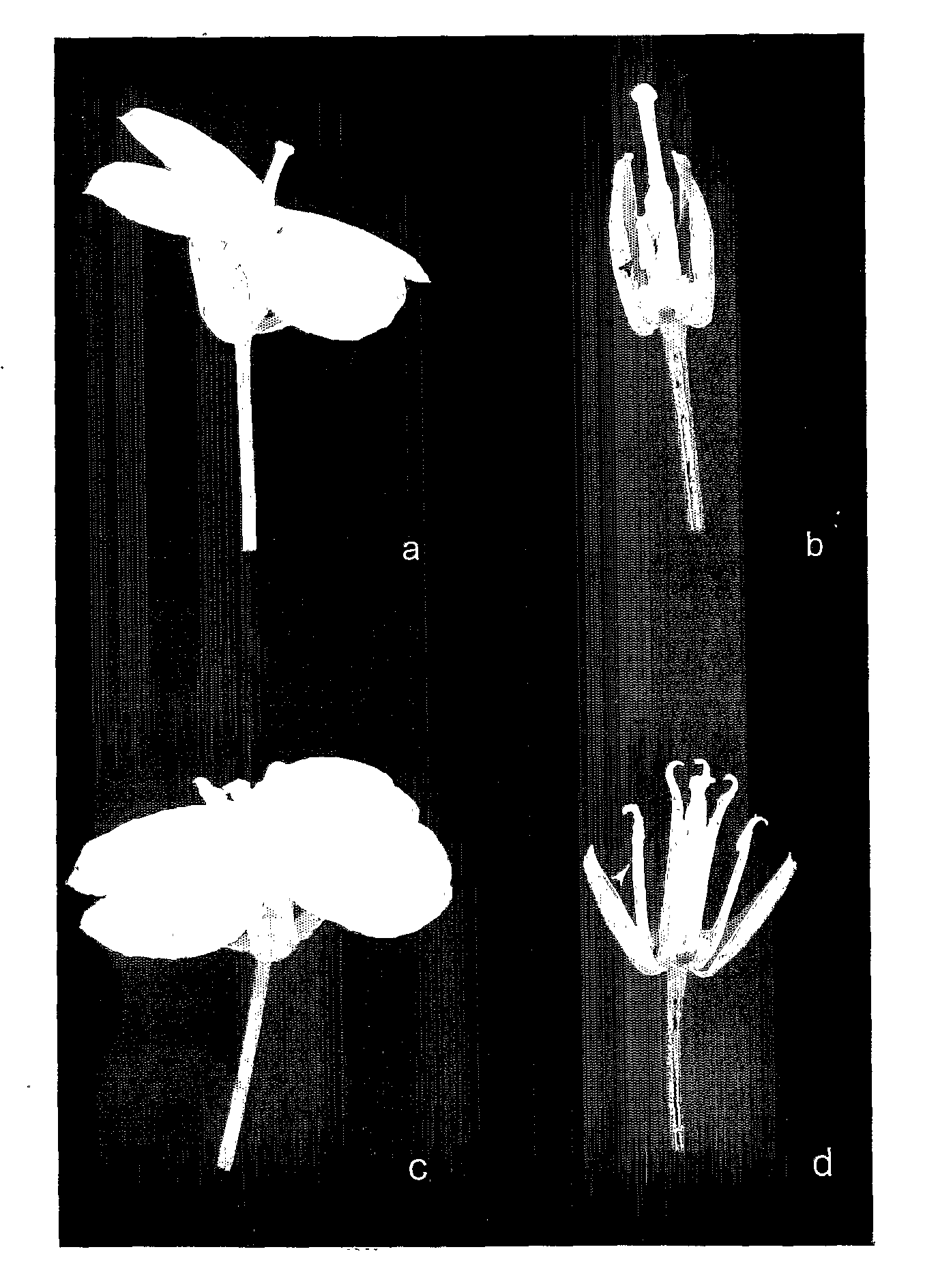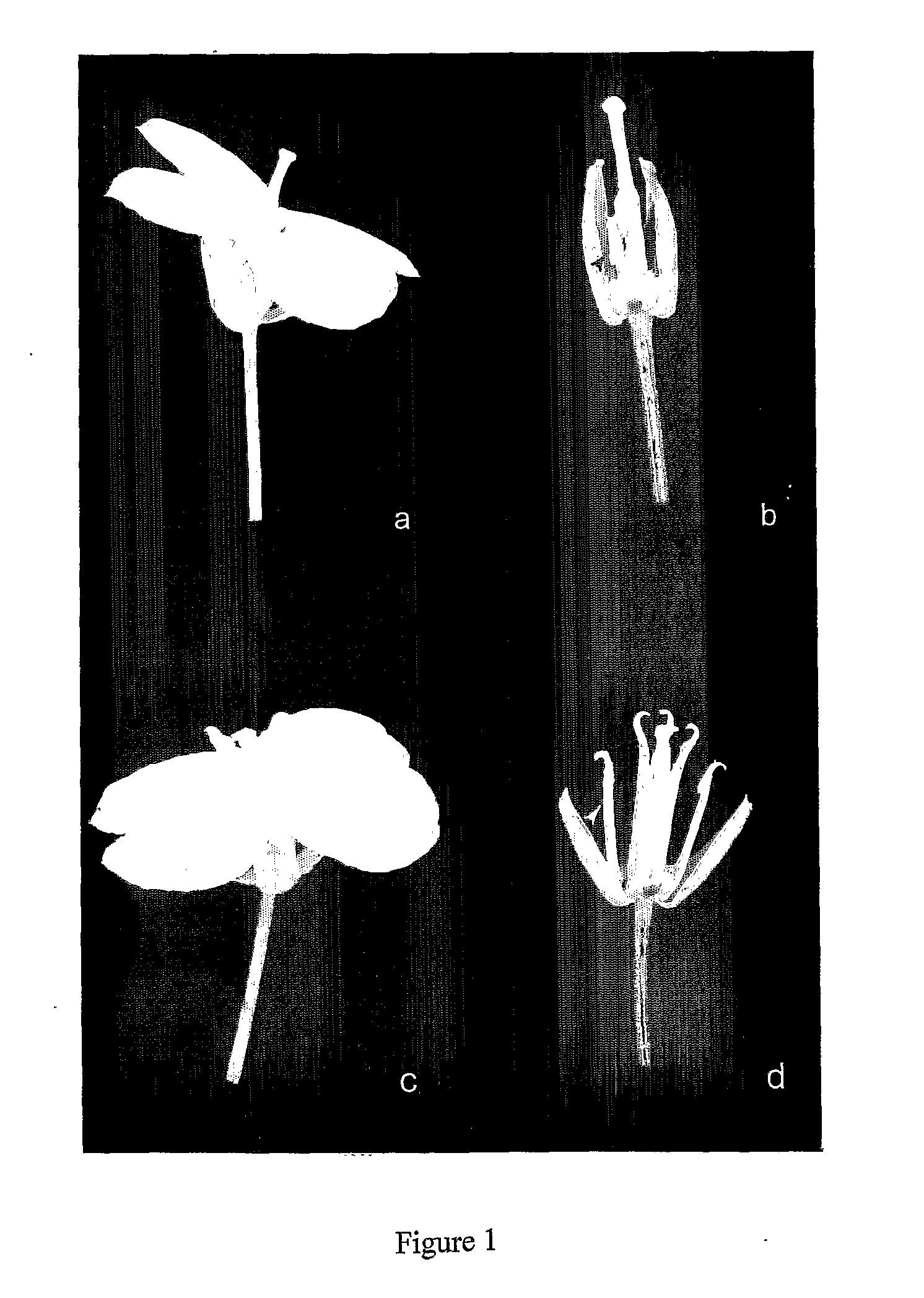Novel Cytoplasmic Male Sterility System for Brassica Species and its Use for Hybrid Seed Production in Indian Oilseed Mustard Brassica Juncea
a cytoplasmic male and hybrid seed technology, applied in biochemistry apparatus and processes, peptide sources, organic chemistry, etc., can solve the problems of affecting the ability of plants to produce functional pollen grains, affecting the ability of plants to produce pollen grains, and most of the alloplasmic cms systems cited above cannot be effectively utilized,
- Summary
- Abstract
- Description
- Claims
- Application Information
AI Technical Summary
Benefits of technology
Problems solved by technology
Method used
Image
Examples
example 1
Development of 126-1 CMS
[0067]Production of doubled haploid plants in B. napus var. ISN 706 was done by essentially following the protocol described by Moellers et. al. (1994, Euphytica 75:95-104).
a) In Vivo Growth Conditions:
[0068]The seeds of B. napus var. ISN 706 were sown and plants were established in a plant growth chamber at a day / night temperature of 20° C. / 15° C. under a 10 h photoperiod for about 40 days till the emergence of inflorescence axis. Thereafter the plants were shifted to a day / night temperature of 10° C. to 5° C. under a 14 h photoperiod for at least 15 days before harvesting buds for microspore isolation.
b) Microspore Isolation:
[0069]40 to 60 flower buds, each of 3-4 mm length were harvested. The buds were washed in mild detergent solution followed by washing in running water for 15 minutes. Then the buds were treated with 70% ethanol for 5 minutes and washed once with sterile distilled water. Subsequently, the buds were sterilized with sodium hypochlorite sol...
example 2
Analysis of the Male Sterility Status of 126-1 CMS
[0076]Plants obtained in example 1 were monitored for male sterility by bagging each plant with a pollination bag to study the seed set on self pollination. Two to three inflorescences bearing 10-15 unopened buds were selfed in each plant. Absence of seed set was taken as a confirmation of male sterility.
example 3
Estimation of Pollen Viability of 126-1 CMS
[0077]Pollen viability was estimated by taking anthers from five randomly chosen flowers and staining the microspores with flourescein diacetate (FDA) as discussed by Heslop-Harrison et. al. (1984, Theor. Appl. Genet. 67:367-375). FDA solution was prepared by dissolving 10 mg of FDA in 20 ml of acetone solvent. Two or three drops of FDA solution were added to 2 ml of 18% sucrose solution to prepare the stock solution. All the 6 anthers of a flower were squeezed in a drop of FDA solution on a glass slide to release the pollen grains. The pollen grains were observed under fluorescent light. Viable pollens fluoresce green and the viability was scored by counting the number of fluorescing pollen grains as against the total number of microspores in a microscopic field.
PUM
| Property | Measurement | Unit |
|---|---|---|
| temperature | aaaaa | aaaaa |
| density | aaaaa | aaaaa |
| volume | aaaaa | aaaaa |
Abstract
Description
Claims
Application Information
 Login to View More
Login to View More - R&D
- Intellectual Property
- Life Sciences
- Materials
- Tech Scout
- Unparalleled Data Quality
- Higher Quality Content
- 60% Fewer Hallucinations
Browse by: Latest US Patents, China's latest patents, Technical Efficacy Thesaurus, Application Domain, Technology Topic, Popular Technical Reports.
© 2025 PatSnap. All rights reserved.Legal|Privacy policy|Modern Slavery Act Transparency Statement|Sitemap|About US| Contact US: help@patsnap.com



